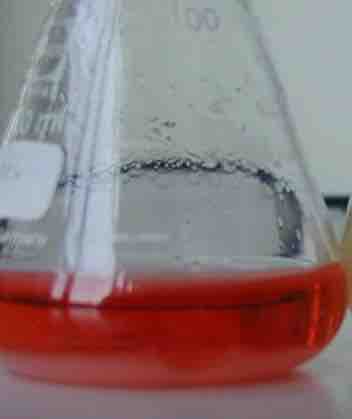Even though penicillin drugs, antibiotics produced by molds, were the first antibiotics successfully used to treat many serious infections, most of the naturally produced antibiotics are synthesized by bacteria. In 1939 the French microbiologist René Dubos isolated the substance tyrothricin and later showed that it was composed of two substances, gramicidin (20%) and tyrocidine (80%). These were the first antibiotics to be manufactured commercially. Gramicidin is a heterogeneous mixture of six antibiotic compounds, all of which are obtained from the soil bacterial species Bacillus brevis and called collectively gramicidin D.
Streptomyces is the largest antibiotic-producing genus, producing antibacterial, antifungal, and antiparasitic drugs, and also a wide range of other bioactive compounds, such as immunosuppressants. They produce over two-thirds of the clinically useful antibiotics of natural origin . The now uncommonly-used streptomycin takes its name directly from Streptomyces. Aminoglycosides, class of antibiotics, that are derived from bacteria of the Streptomyces genus are named with the suffix -mycin, whereas those that are derived from Micromonospora are named with the suffix -micin. However, this nomenclature system is not specific for aminoglycosides.

Supernatant of a Streptomyces davawensis culture
The picture shows the typical red color of the antibiotic Roseoflavin secreted by the Streptomyces cells in the culture.
Streptomycetes are characterised by a complex secondary metabolism. Almost all of the bioactive compounds produced by Streptomyces are initiated during the time coinciding with the aerial hyphal formation from the substrate mycelium.
Streptomycetes produce numerous antifungal compounds of medicinal importance, including nystatin (from S. noursei), amphotericin B (from S. nodosus), and natamycin (from S. natalensis).
Members of the Streptomyces genus are the source for numerous antibacterial pharmaceutical agents; among the most important of these are: Chloramphenicol (from S. venezuelae), Daptomycin (from S. roseosporus), Fosfomycin (from S. fradiae), Lincomycin (from S. lincolnensis), Neomycin (from S. fradiae), Puromycin (from S. alboniger), Streptomycin (from S. griseus), Tetracycline (from S. rimosus and S. aureofaciens).
Clavulanic acid (from S. clavuligerus) is a drug used in combination with some antibiotics (like amoxicillin) to block and/or weaken some bacterial-resistance mechanisms by irreversible beta-lactamase inhibition.
Other bacterial species produce antibiotics as well. Such an example are some Pseudomonas species which produce antimicrobial compounds. P. aurantiaca produces di-2,4-diacetylfluoroglucylmethane, a compound antibiotically active against Gram-positive organisms. Other Pseudomonas spp. might produce compounds antagonistic to other soil microbes, such as phenazine-type antibiotics or hydrogen cyanide.